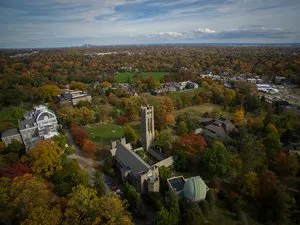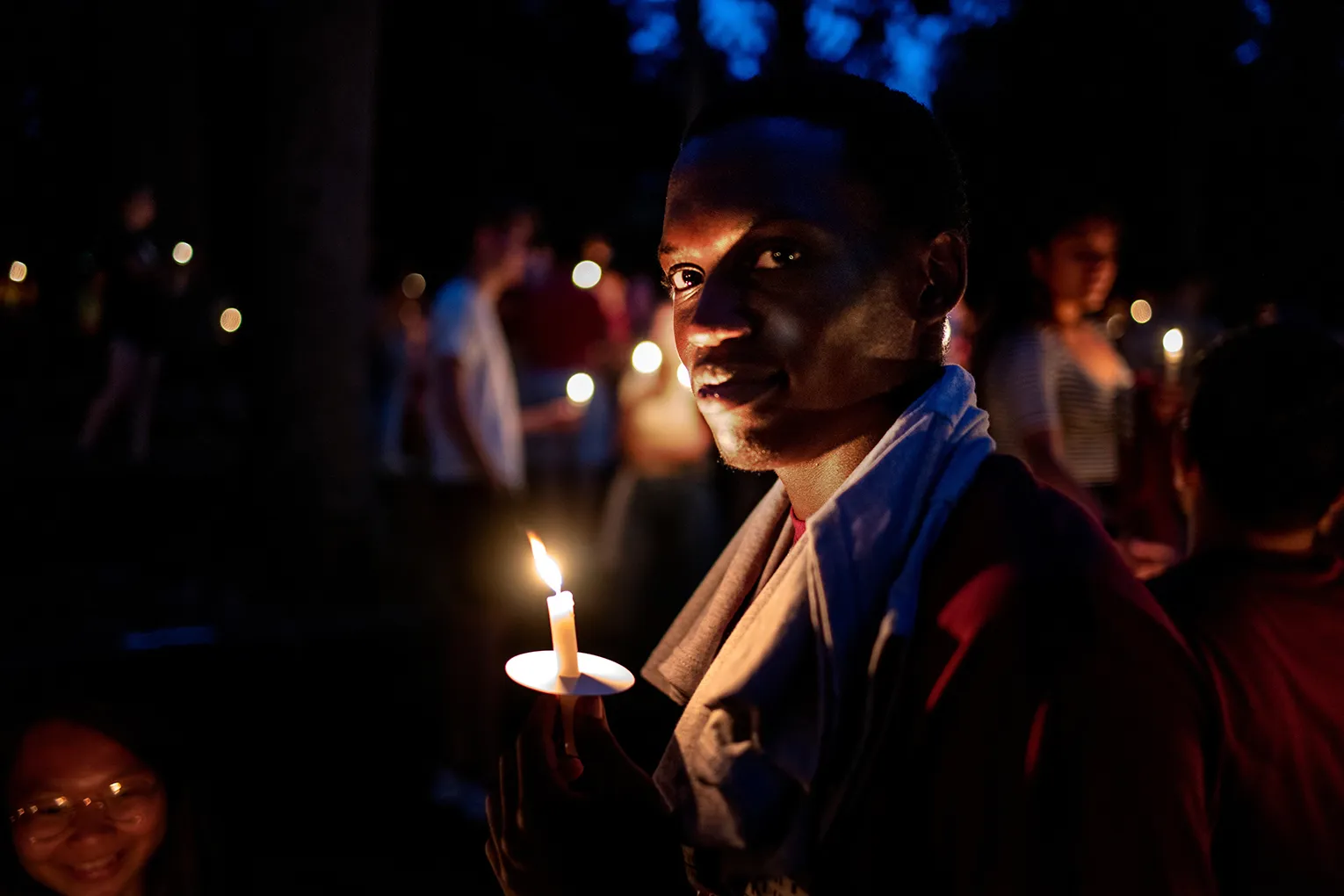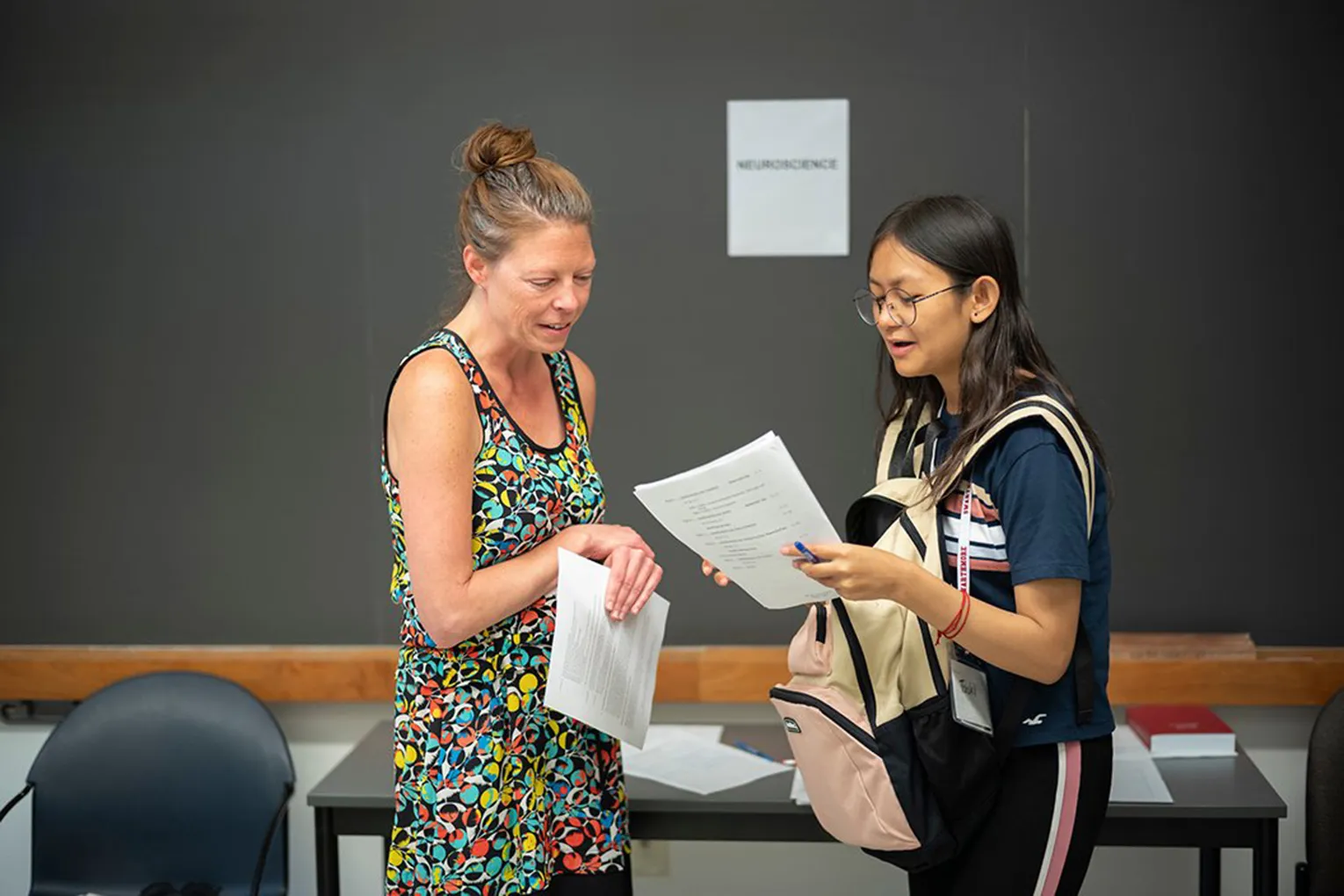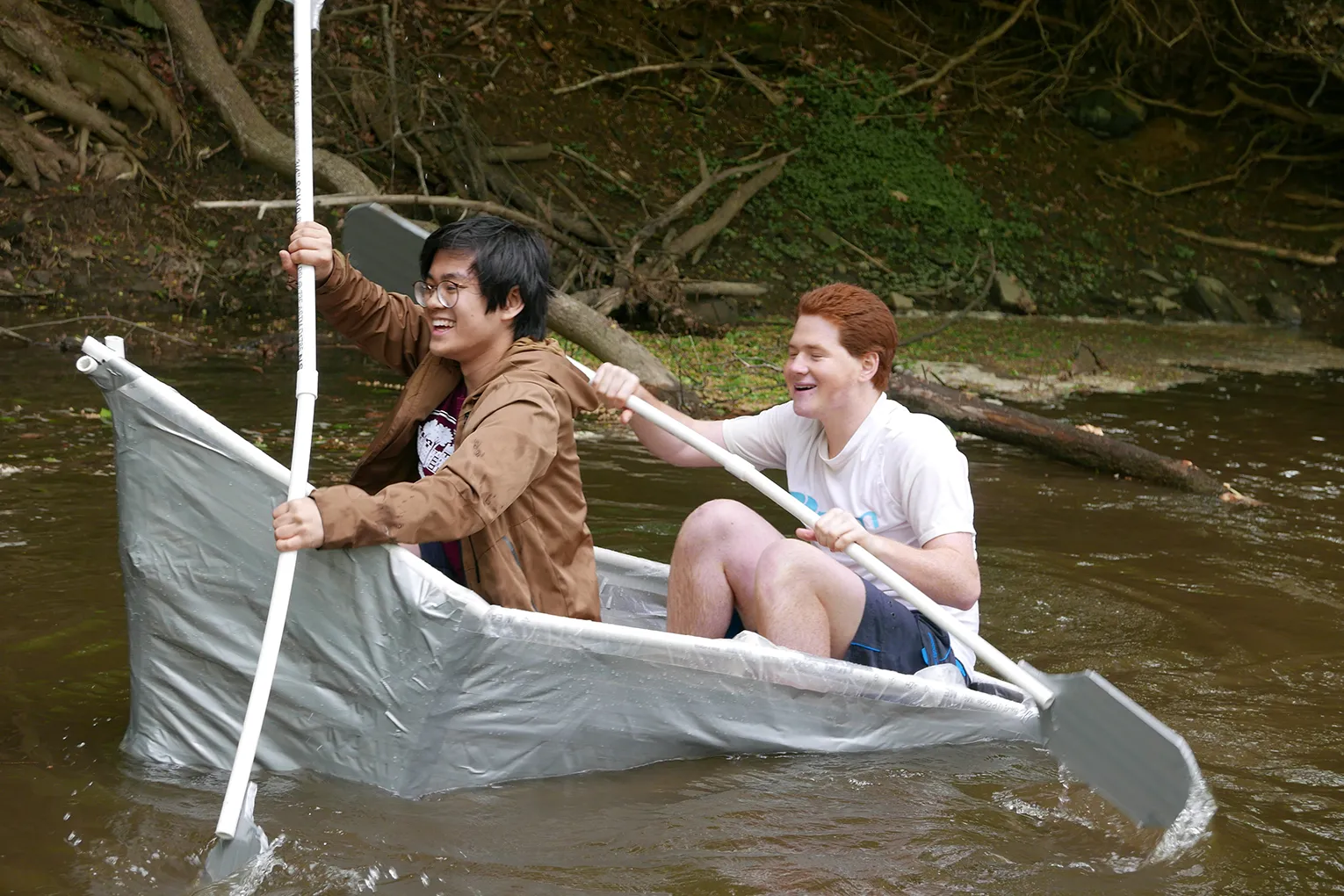Nature's Sway: Recent Works by Mami Kato
The List Gallery is pleased to present an exhibition of recent mixed-media sculptures, works on paper, and a new site specific installation by Mami Kato. The exhibition will take place January 23—February 23, 2025. On Thursday, January 23 at 4:30 PM, Kato will give a gallery talk together with Director of the Swarthmore College Art Collection and List Gallery Curator Andrea Packard. The opening reception will follow from 5:00–7:00 PM. Gallery hours are: Tuesdays through Sundays, Noon–5:00 PM. The exhibition has been funded in part through the generous support of Joan Gordon. Admission is free and all are welcome.
Mami Kato was born in 1960 in Akita, Japan and grew up observing the work practices and growth cycles taking place in the rice fields near her home. Observing organic forms and learning about broader scientific principles remains essential to her aesthetic. She frequently uses materials that are connected to her heritage and daily life, including rice straw, egg shells, and Japanese rice paper. By variously separating, joining, and transforming such materials, she creates composite forms that reflect malleability and dynamism in nature.
Kato's List Gallery exhibition features several of her large-scale sculptures, including Big Knot (2019), a seven-foot-tall, wall-mounted work, and Umbilical Field (2011), which is five feet in diameter. To create these works and a smaller wall-mounted piece, Uro #2 [Foxtail] (2020), Kato creates structures using wood, foam, resin, and linen and then covers them with bundles of Japanese rice straw. She buys the straw in rope form, untwists the ropes, ties the straw into bundles, and then attaches them to her armatures. Her continuous, richly textured, and warm-brown textures animate her forms and emphasize their dynamism.
A site-specific installation in the rear room of the List Gallery explores some of the other aesthetic and expressive possibilities of jute fiber. Rather than untwining and bundling the jute string into stalks or covering an underlying armature, Kato explores the tensile properties of the fibers: stretching them into semi-transparent structures, reconfiguring them in response to the surrounding architecture, and allowing friction and gravity to guide her creative process. Such investigations reflect her ongoing engagement with the principles of physics and Buddhist practices, including observant mindfulness and the acceptance of change.
In contrast to the open-ended structure of her installation, Quarantine Houses (2024) conveys a personal and social narrative. Kato began this mixed media work in 2020, shortly after Philadelphia imposed a mandatory quarantine in response to the COVID-19 pandemic. One day, while commuting by bicycle to her studio in Northern Liberties, she was impressed by the continuing vitality of spring plants blooming in small city plots; at the same time, she also noticed how people isolating in their homes were less connected to nature and their lives seemed more fragile and obscured. In response, Kato began a sculptural form of journaling: She searched for and picked a small plant sprig during her daily commute, then folded rice paper into the shape of a four-inch-long house that could preserve the plant. Quarantine Houses features more than 40 such houses placed side-by side on a ten-foot-wide, wall-mounted lightbox. Illuminating the homes from below, she calls attention to their shadowy contents and poignancy.
Kato's exhibition explores the expressive possibilities of materials collected through other daily practices, such as cooking. For example, she created the undulating stem of Egg Flower (2017) by joining the convex portions of eggshells saved from her own kitchen. The stem curves downward from the wall before bending up toward the viewer and forming a bloom created with concave shell fragments. Where the concave fragments join, the edges form tessellations reminiscent of honeycombs. Other egg-formed pieces, such as Biode and Loop (both 2023), incorporate lace-like structures that evoke both biological forms and mathematical principles.
Some of Kato's most intimate works on exhibit, such as Plant Sway (2021), and Amoeba (2024), explore the elasticity of gampi fibers. She begins these nuanced works by sketching her subject, such as an amoeba or an array of petals. Next, she places transparent rice paper on top of her sketch. Then, instead of merely tracing the image, she wets the rice paper and uses needles to gently loosen and rearrange the fibers until they echo the design of her underlying sketch. She completes the works by brushing on delicate layers of gouache paint. Whether working on an intimate scale using tiny needles or creating a towering sculpture, she focuses on the act of making, not commercial production or self-promotion.
In his introduction to the catalog for Hurwitz/Kato, Concurrence and Divergence, a two-person exhibition at Wexler Gallery, Philadelphia in 2019, Martin Puryear observed that Kato works in a near-meditative state of quiet solitude and she focuses on the act of making, not self-promotion; as a result, "Kato's name is not nearly as well-known as it deserves to be." Nearly five years later, with Kato's List Gallery exhibition, we hope to highlight the importance of her remarkable and wide-ranging practice.
Biography:
Mami Kato was born in 1960 in Akita, Japan. She studied painting for three years at Musashino Arts University Tokyo before studying sculpture at Tokyo School of Art (1982-1985), where she worked with Styrofoam, wood, plaster, metal, fabric, and paper. She also studied sculpture at the Philadelphia College of Art, where she received a BFA in sculpture in 1987. In 1992, after working and exhibiting for several years in Tokyo, Kato moved back to Philadelphia, where she continues to live and work.
Kato has presented her work at numerous venues abroad, including solo exhibitions at Ai Gallery and Shibuya Tokyu, in Tokyo. She has also exhibited internationally at Sarah Myerscough Gallery, London and the Wutong Art Museum in Shanghai, China. Her participation in major art fairs includes Design Miami (2022 and 2021) and Expo Chicago (2020). In the Philadelphia region, her recent exhibitions include Kato/Hurwitz, Convergence and Divergence, a two-person exhibition at Wexler Gallery, Philadelphia with her husband, Michael Hurwitz (2019). Her work was featured in PAD London, London (2024); Natural Rhythms, at Chautauqua Institution in Chautauqua, NY (2022); Sugoi! 200 Years of Japanese Art, at Kalamazoo Institute of Arts in Kalamazoo, MI (2023); and Panta Rhei: Everything Flows, at Ippodo Gallery, New York, NY (2023). Kato received a fellowship from the Center for Emerging Visual Artist (2011-2012). Currently, she is represented by Wexler Gallery in Philadelphia, Ippodo Gallery in New York City, and Sarah Myerscough Gallery in London.




